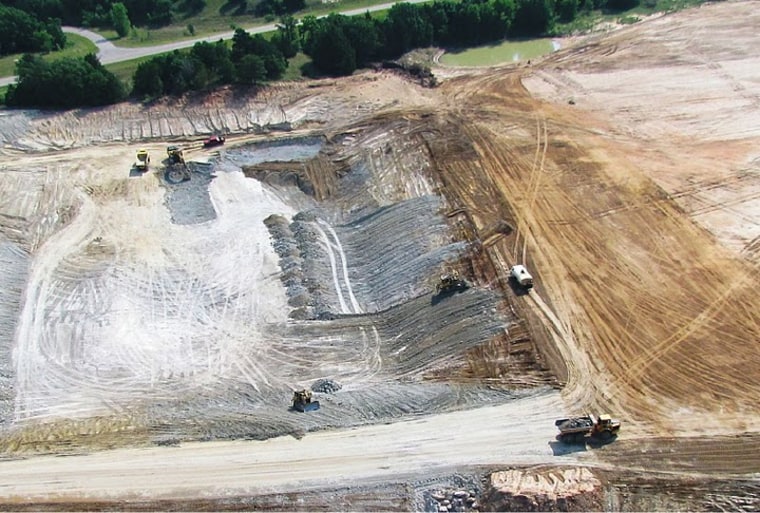Fracking, the latest push in the quest to produce oil and gas, has been blamed for environmental problems ranging from flammable tap water to minor earthquakes. Now a new risk is being alleged: sand mining.
To squeeze hydrocarbons out of shale through hydraulic fracturing of the rock — the process known as fracking — producers need to pump an enormous amount of sand and other materials into the ground.
Obtaining the sand for this requires removing the top layer of earth over a sandstone deposit and using heavy equipment and large amounts of water to produce the fine grains.
According to some environmentalists and residents of affected areas, sand mining poses a threat to air and water quality.
Facing a shortage of the sand needed in fracking, oil and gas producer EOG Resources got into this mining business to secure scare supplies and bring down costs.
But the company is facing big opposition to an operation planned in North Texas' Cooke County.
"One of the big concerns is the impact on the air," said Jessie Thomas-Blate of the conservation group American Rivers. "Mining kicks up a lot of dust, and the people in the area can breathe in that dust."
If inhaled, crystalline silica, a building block in so-called frac sand, is a potential carcinogen and can cause lung and other diseases, according to the U.S. Occupational Safety and Health Administration.
The mining process can also cause erosion and run-off that can fill nearby rivers with sediment, reducing oxygen levels for fish and plants, Thomas-Blate said.
EOG has promised that it will use start-of-art emissions equipment and that water for the project will come from wells drilled below the region's drinking water aquifer.
"The plant is designed to meet all standards related to air emissions as set forth by the Texas Commission on Environmental Quality," the company said in a statement.
In a hydraulic fracturing job, a mix of water, sand and other chemicals is injected into shale wells at very high pressures. The process creates small fissures in the rock that allow oil and gas to flow through the well.
EOG already has one sand mine in Texas' Hood County and one in Wisconsin. It plans two more in Wisconsin.
Not everyone is happy.
"There are air quality concerns, concerns about water quality and worries about truck traffic and its effect on the roads," said Wylie Harris, a rancher whose property is less than a mile from the North Texas site where EOG intends to build.
The Cooke County mine still lacks a state air quality permit that EOG needs before it can finish the project, and county officials are asking for a hearing on the matter.
A meeting in August to discuss EOG's plans for the Cooke County sand operation drew more than 500 residents, said Stan Endres, city manager for Muenster, a town about 15 miles from the site.
"The majority of people who are concerned are the people that have property out there," Endres said. He is also concerned that trucks hauling the sand away from the mine will damage state and city roads at a time when budgets are tight.
To counter local criticism, EOG says its sand mine will bring 40 permanent jobs and tax revenue to two counties in North Texas, according to a fact sheet posted on the company's website.
The North American rush to produce crude oil and natural gas from shale formations has driven up demand and prices for frac sand.
"There's been a sand shortage in the U.S.," EOG Chief Executive Officer Mark Papa told investors this month. "And so those who have sand or have access to sand can pretty much charge what they want for that sand."
The amount of industrial sand used in hydraulic fracturing has quadrupled from 2000 to 2009, said Tom Dolley, mineral commodity specialist at the U.S. Geological Survey.
The government estimates that 6.5 million metric tons of sand were used in hydraulic fracturing in 2009 — the latest year figures were released — and expects to find that amount doubled in 2010.
Because the numbers are self-reported, Dolley said they probably understate the industry's production and use of frac sands.
"There really is a gold rush right now for this type of material," he said.
As shale drilling becomes more complex and wells keep getting bigger, the need for sand will only increase in the United States and overseas.
"There may be a shortage for a long period of time," said energy analyst Mike Breard of Hodges Capital Management in Dallas.
